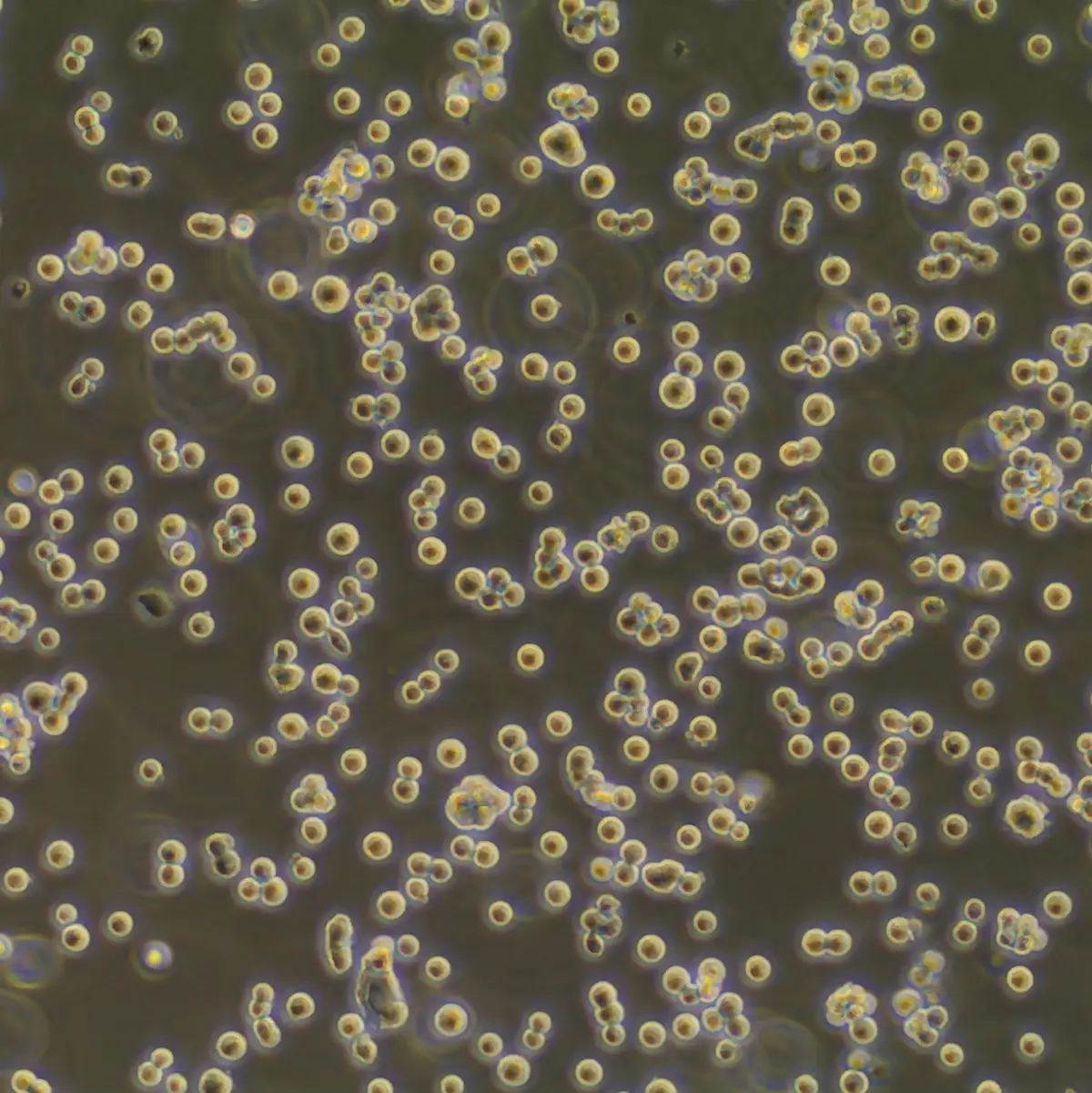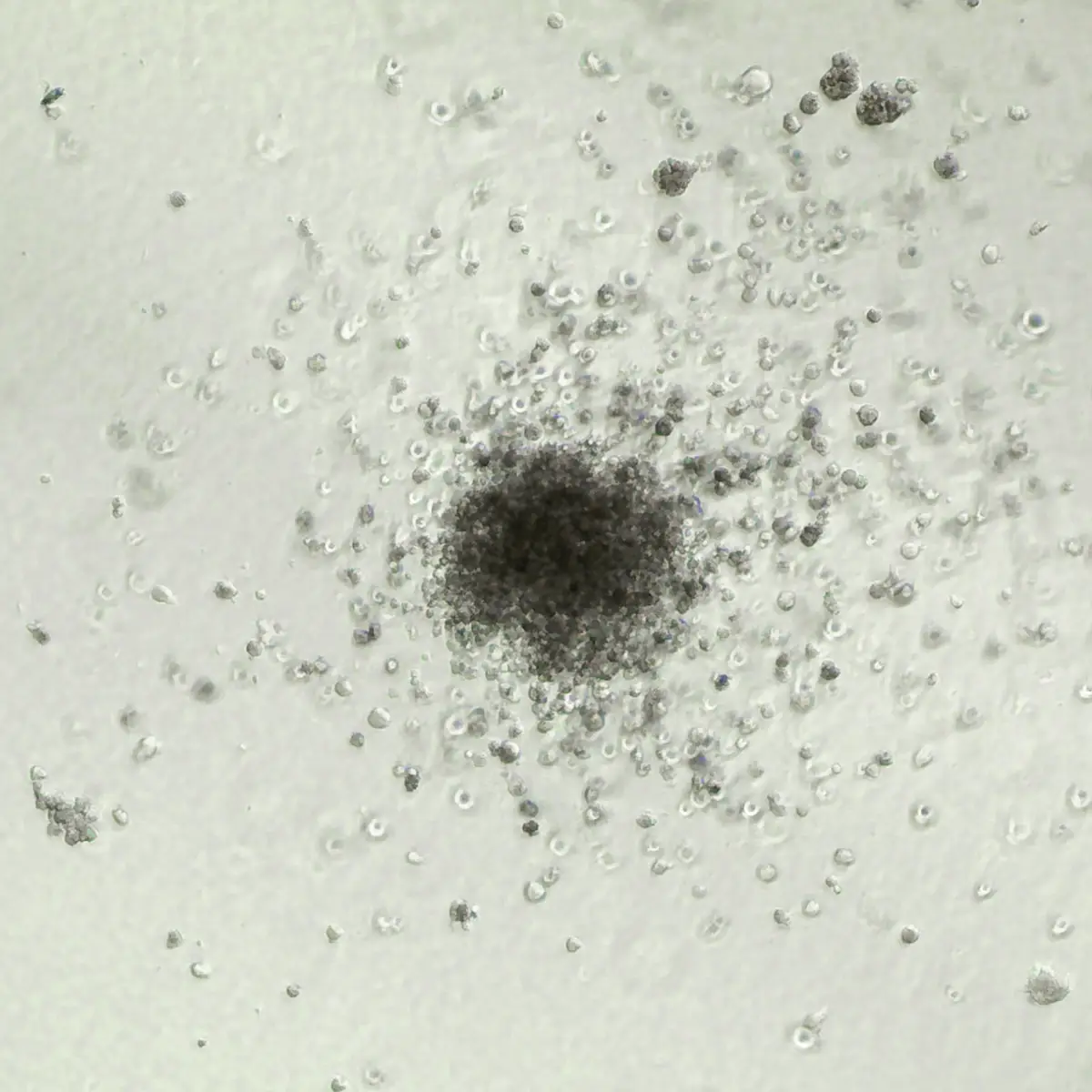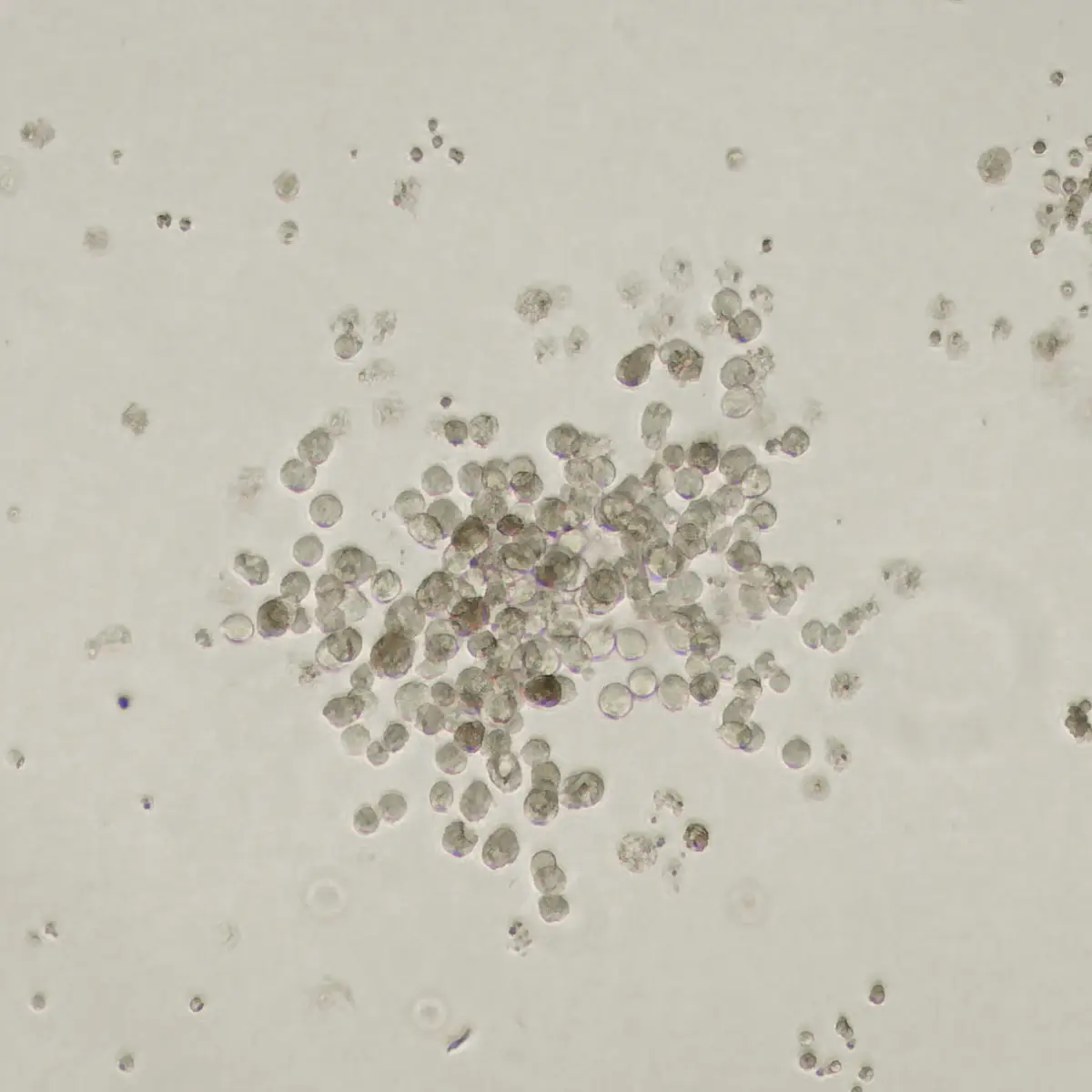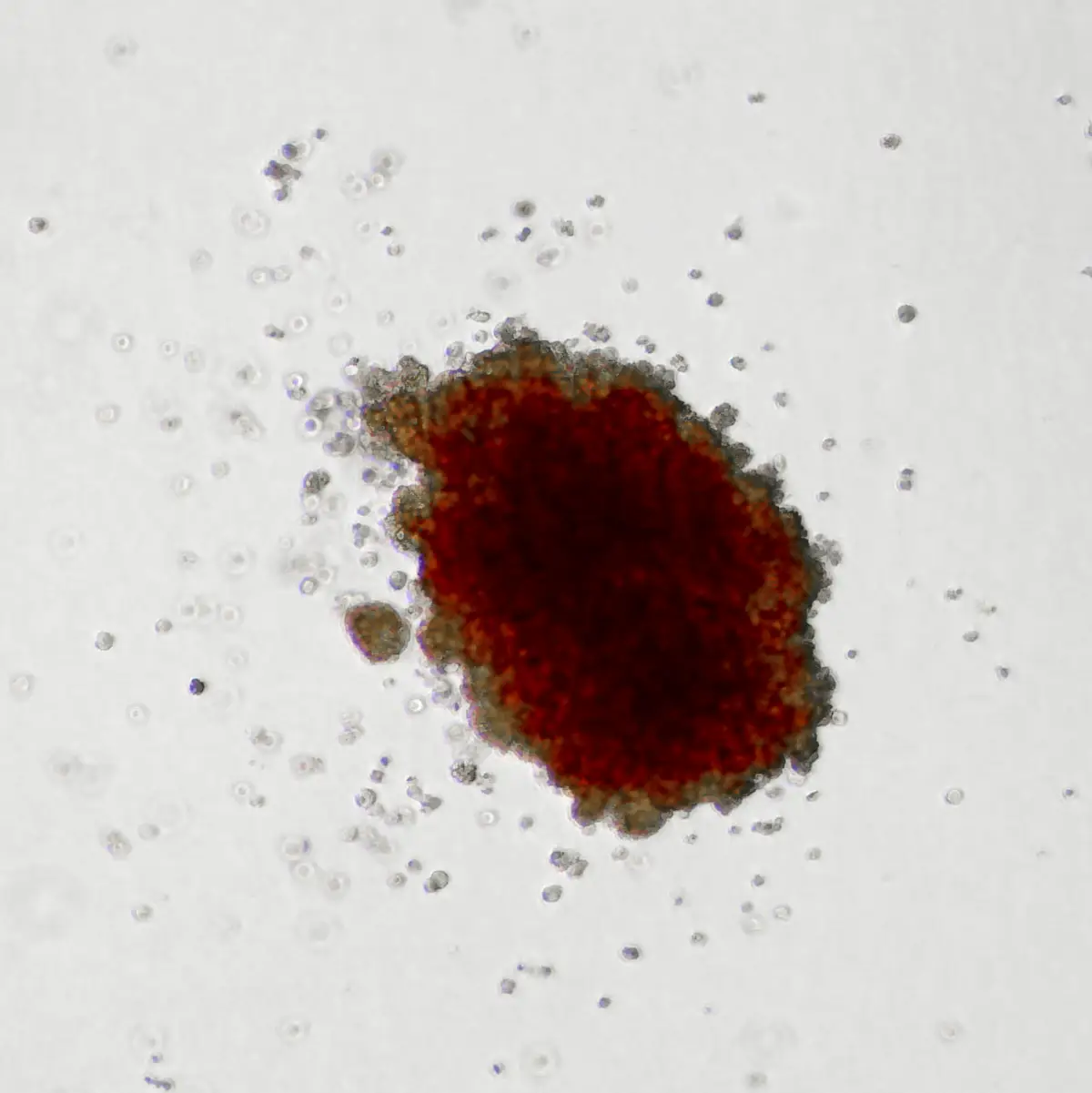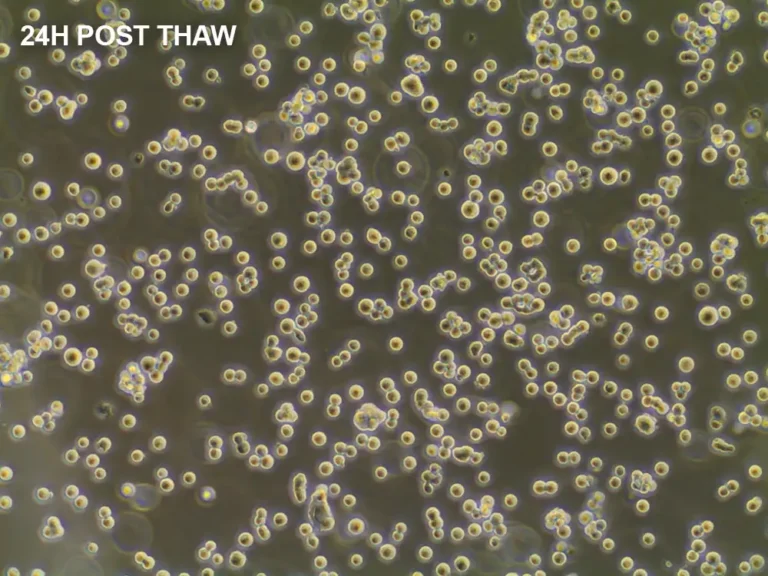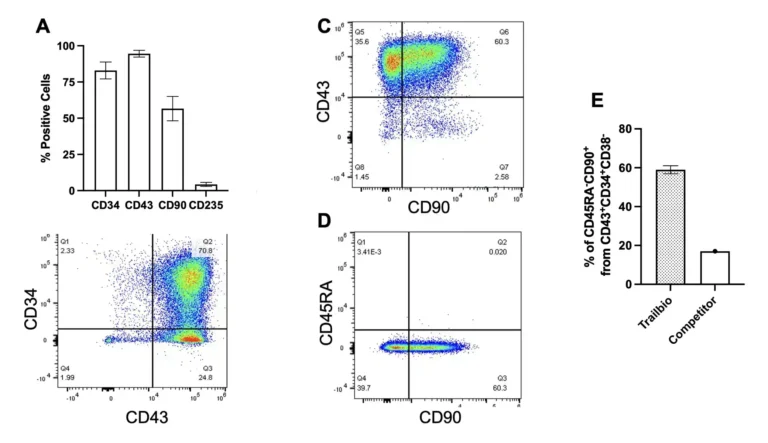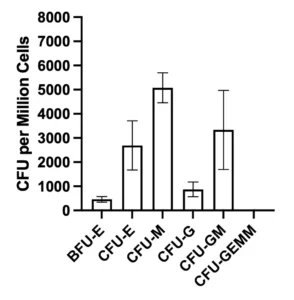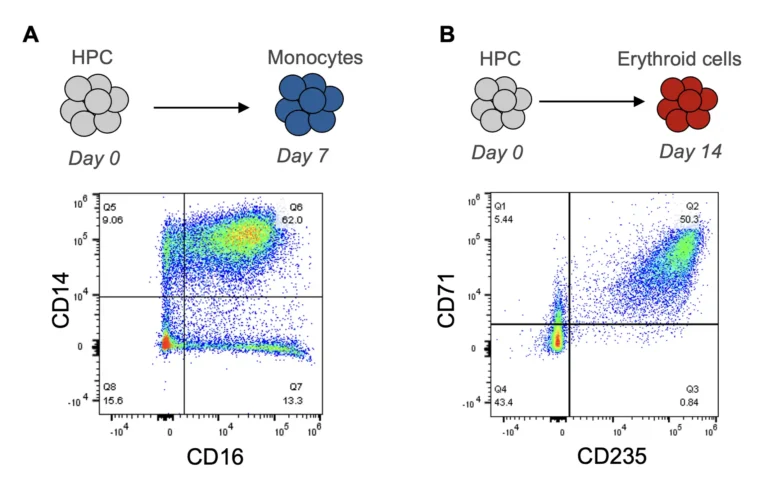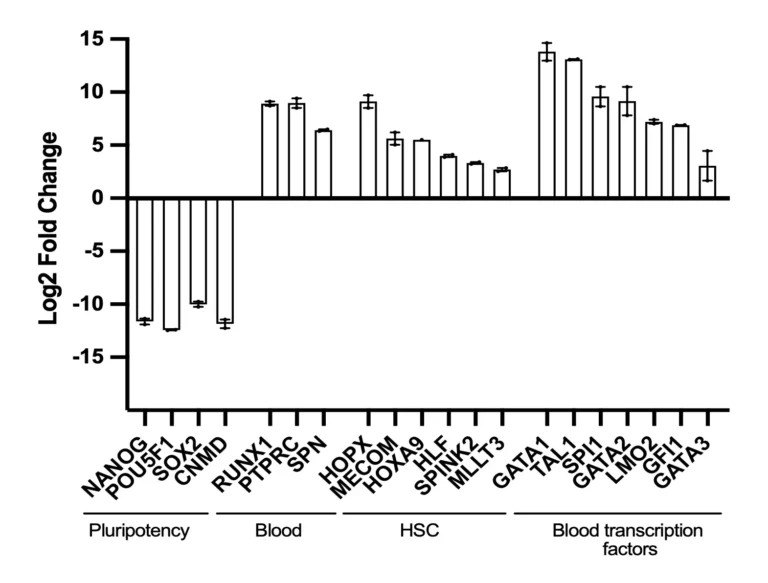Description
Data and Figures
TrailBio® Hematopoietic Progenitor Cells Show Characteristic Morphology
TrailBio® HPCs were imaged 24 hour post–thaw using brightfield microscopy. HPCs grow in suspension and show a typical round morphology.
Flow Cytometric Characterization of Thawed TrailBio® Hematopoietic Progenitor Cells (HPCs)
(A) Unsorted, thawed TrailBio® HPCs display highly pure expression of HPC markers CD34, CD43 and retention of CD90. CD235 expression remains low. (B) Over 70% of HPCs show strong co-expression of CD34 and CD43, with low spontaneous differentiation. (C, D) Approximately 60% of TrailBio® HPCs retain CD90 and CD43 co-expression of which, no cells co-express the differentiation marker, CD45RA, confirming an early phenotype. (E) Further, 60% of cells exhibit a classical primary HSC profile, representing a increased enrichment compared to alternative commercially available HPCs.
Multilineage Potential of TrailBio® Hematopoietic Progenitor Cells in Colony-Forming Unit Assays
TrailBio® HPCs demonstrate robust differentiation capacity, giving rise to multiple colony types. The formation of both myeloid (e.g., CFU-GM) and erythroid (e.g., BFU-E) colonies confirmed their multipotent nature. Data are representative of three independent experiments (n=3).
Directed Lineage Differentiation of TrailBio® Hematopoietic Progenitor Cells (HPCs)
TrailBio® HPCs were differentiated into specific hematopoietic lineages using published lineage-specific protocols and then analyzed by flow cytometry for surface marker expression. (A) Myeloid differentiation was induced over 7 days, resulting in 75% of cells expressing CD14 and 62% co-expressed markers CD14 and CD16. (B) Erythroid differentiation was induced over 14 days, with 50% of cells co-expressing CD71 and CD235.
Bulk RNA-seq of Differentiated TrailBio® Hematopoietic Progenitor Cells
Bulk RNA-seq analysis confirmed loss of pluripotency marker expression and upregulation of hematopoietic genes (RUNX1, PTPRC, SPN), HSC-associated genes (HOPX, MECOM, HOXA9, HLF, SPINK2), and key hematopoietic transcription factors (GATA1, TAL1, SPI1, GATA2, LMO2, GFI1, GATA3) when compared to starting iPSCs. These results support the appropriate commitment of TrailBio® HPCs to hematopoietic lineages.
Technical Info and Resources
Frequently Asked Questions
What are iPSC-derived hematopoietic progenitor cells?
iPSC-derived hematopoietic progenitor cells are multipotent stem cells derived from induced pluripotent stem cells (iPSCs). They can differentiate into all major blood cell types, including erythrocytes, monocytes and neutrophils. In literature, they are typically identified by the expression of hematopoietic markers such as CD34 and CD43 and functionally validated through colony-forming unit (CFU) assays.
What applications are TrailBio® Hematopoietic Progenitor Cells suitable for?
Researchers can utilize TrailBio® Hematopoietic Progenitor Cells in various applications, such as disease modeling, drug development and toxicity, organ–on–a–chip applications, transplantation research and hematopoietic differentiation studies.
What markers do these HPCs express?
TrailBio® Hematopoietic Progenitor Cells are multipotent cells that express hematopoietic markers CD34, CD43 and CD90 and negative for CD38 and CD45RA. They express key hematopoietic transcription factors, including MECOM, HLF, HOPX and the gene SPINK2.
What value do iPSC-derived TrailBio® Hematopoietic Progenitor Cells offer?
TrailBio® Hematopoietic Progenitor Cells are engineered to minimize lot-to-lot variability, providing a reliable and reproducible biological starting material. Further, TrailBio® HPCs are differentiated from human iPSCs using a novel directed differentiation protocol that closely mimics natural developmental cues to generate cells with high purity and functional characteristics.
